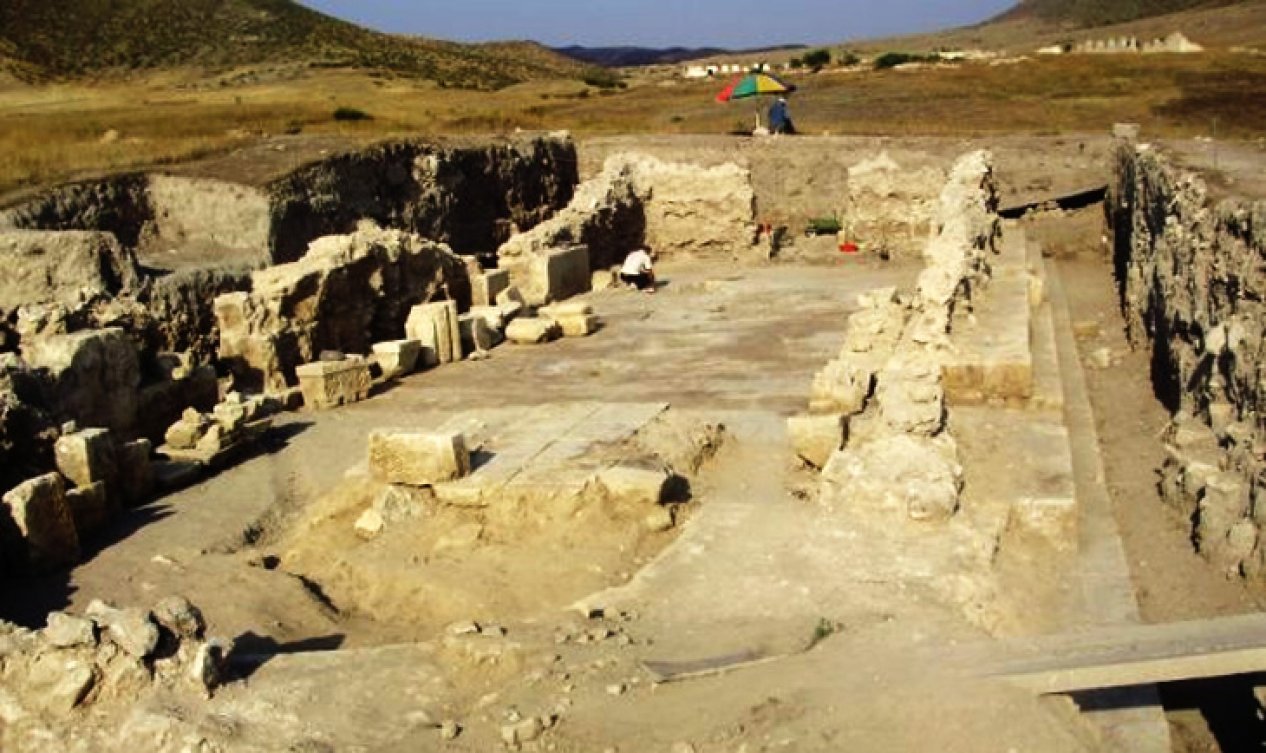
Armenian archaeologist Hamlet Petrosyan called it a deliberate step that Armenia, Armenian cities and Armenian specialists remained outside the scientific conference ‘Cities on the Edge: Exploring Late Antique urbanism in the Southern Caucasus (AD 300–600)’ which will take place in Denmark in October.
“I consider this to be one of the manifestations of the current politically organized Armenian-Azerbaijani-Turkish conflict, and attempts are being made to bring politics into the sphere of science... Azerbaijan often presents the Caucasus as non-Armenian, it mentions that the Armenians came later, that there were no Armenians in Karabakh at all, and etc. It seems that this ideology has spread to history, past, memory, and one of the evidence of which is this conference, which tries to identify the cities of the South Caucasus of the 3-6 centuries, not including Armenia, Armenian cities,” Petrosyan emphasized.
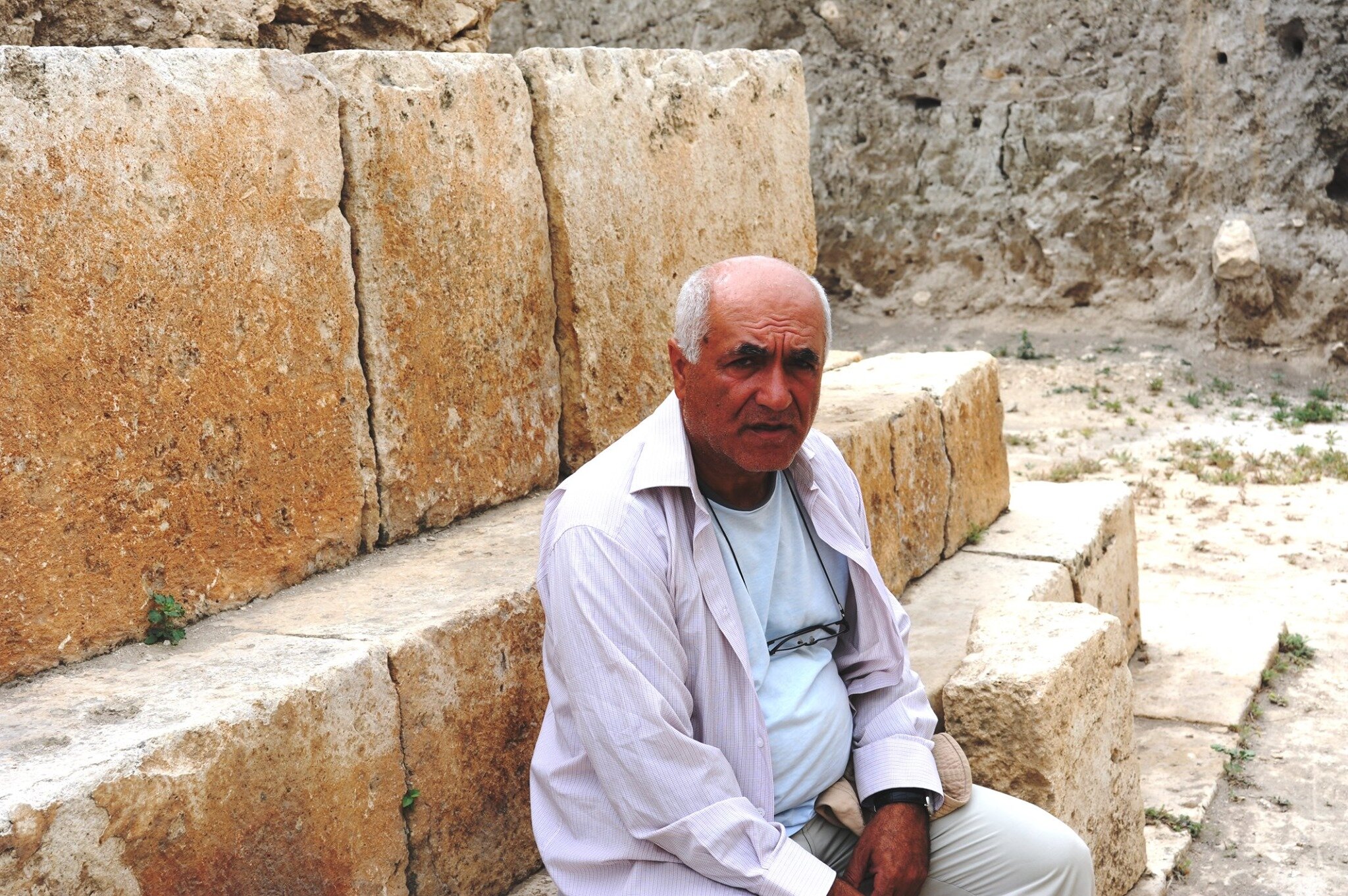
Petrosyan is dissatisfied with Azerbaijan’s reaction to his taking out archaeological materials from Aghdam, revealed during illegal excavations in the occupied territory of Aghdam district. "Let me remind the semi-literate propagandists of the aggressive state that the archaeological excavations in ‘Tigranakert’ were carried out at the official invitation and with the permission of the Artsakh authorities... Let me remind you that the Azerbaijani archaeologists who worked on this territory in the 60s-80s of the last century did not see archaeological traces of the old city. I urge them not to envy what they could not find," said Petrosyan.
Indeed, in October this year, Denmark will host an international scientific conference ‘Cities on the Edge: Exploring Late Antique urbanism in the Southern Caucasus (AD 300–600),’ organized by the Aarhus and Oxford universities. It will be held at the Moesgaard Museum in the Danish city of Hoybjerg (a suburb of Aarhus) and will bring together prominent Caucasian and Albanian scholars from different countries.
Judging by the information from the conference website, there are really no representatives of Armenia among the speakers.
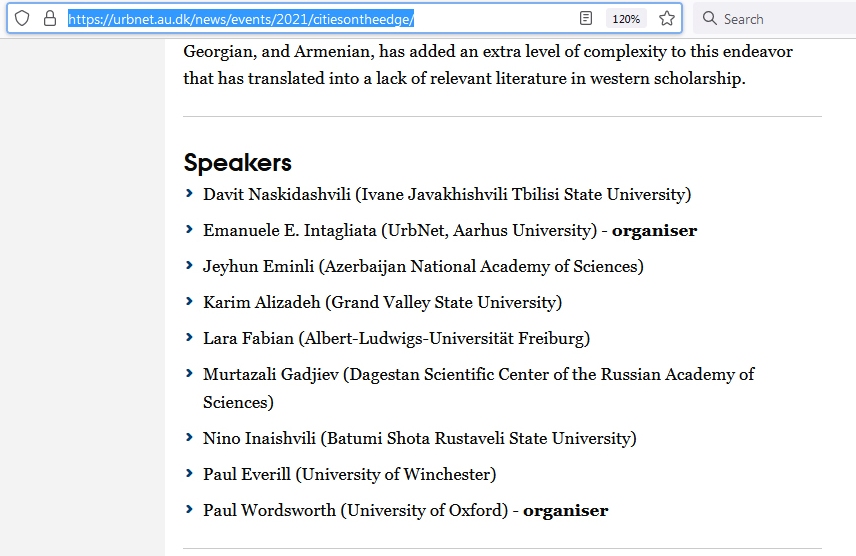
This is the only truth that came from Hamlet Petrosyan.
A few days before the end of the 44-day war, the workers of the so-called ‘Tigranakert Museum’ took to Armenia all the archaeological materials collected during the years of illegal excavations.
Hamlet Petrosyan calls this "salvation", although theft and violation of international norms are evident. Archaeologist did not hide the fact of the theft of historical values and posted the corresponding photos on his Facebook page.
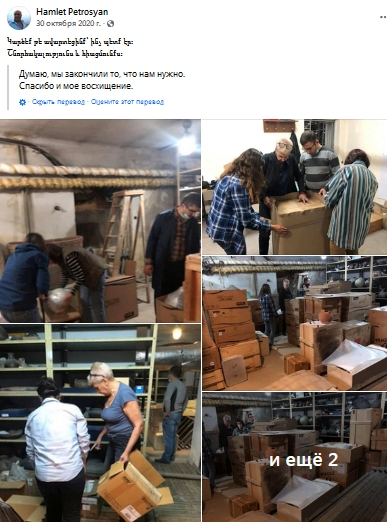
On this fact, representatives of the scientific circles of Azerbaijan appealed to the prosecutor's office. The General Prosecutor's Office considered the appeal of the scientific workers of the Institute of Archeology and Ethnography of Azerbaijan National Academy of Sciences (ANAS) on the conduct of illegal archaeological excavations by the Armenians in the territories of Azerbaijan, plundering the monuments of the material and cultural heritage of the country.
It was noted that since 2005, a group of employees of the Institute of Archeology and Ethnography of the Academy of Sciences of Armenia has been conducting exploration work in the Aghdam district, near the Shahbulag fortress. This group, under the leadership of Hamlet Petrosyan, head of the Department of Culturology at Yerevan State University, has been conducting illegal excavations since 2006. For 14 years they have stirred up the remains of an ancient Azerbaijani city, claiming that they have found confirmation of the existence of the so-called stronghold of Armenian civilization - the city of ‘Tigranakert,’ which allegedly existed many centuries ago.
Already in 2009, the Tigranakert nature reserve was formed on this site, and in 2010, in the Shahbulag fortress belonging to the Karabakh Khanate, Armenian scientists illegally opened the ‘Tigranakert Archaeological Museum.’ Finds previously made in the vicinity of the fortress were also transferred there. After the liberation of the Azerbaijani lands, Petrosyan himself posted on his Facebook page that all samples of material and cultural heritage were taken from the museum to Armenia, the authors of the appeal note.
Thus, the Armenian side violated the 1998 Law of the Republic of Azerbaijan "On the Protection of Historical and Cultural Monuments," the Protocol of 1999 to the 1954 Hague Convention on the protection of cultural property in time of armed conflict (Armenia is a party to this Protocol). The requirements of the 1992 Convention for the Protection of the Archaeological Heritage of Europe were also violated.
A few hours after the appeal was received by the Prosecutor General's Office, the investigating authorities opened a criminal case on the above-mentioned facts.
The Armenians, for their part, also tried to take some steps. Thus, in November, the Russian media published an appeal by the head of the Armenians of Russia Ara Abrahamyan to the President of the Russian Federation Vladimir Putin with a request to protect the "Armenian" monuments in Nagorno-Karabakh. The notorious "Tigranakert" is also mentioned among them.
But Putin could not help the Armenians in any way, because international law was on the side of Azerbaijan.
The Hague Convention on the protection of cultural property in time of armed conflict is the first international treaty that focuses exclusively on the protection of cultural property in armed conflict.
The first protocol was adopted simultaneously with the Hague Convention, on May 14, 1954. The first protocol to the convention prohibits the export of movable property from the occupied territory, and also requires its return to their original territory upon completion of military actions. Party states that are under an obligation to prevent the export of such property may be obliged to pay compensation to states whose property was removed during hostilities.
The Convention on the Means of Prohibiting and Preventing the Illicit Import, Export and Transfer of Ownership of Cultural Property was signed in November 1970. According to the document, archaeological finds (including ordinary and secret ones) and archaeological discoveries are considered cultural values.
Thus, we have proved that the actions of Hamlet Petrosyan were illegal, as they violate both Azerbaijani legislation and international legal acts.
Petrosyan claims that "the archaeological excavations in Tigranakert were carried out at the official invitation and with the permission of the Artsakh authorities," which is a far-fetched thesis, because the so-called "NKR" was not recognized by the world and was not a legitimate entity. For thirty years of its "independence" (illegally declared in September 1991), not a single country has recognized the separatist entity, even Armenia itself.
The "independence" of Karabakh was recognized only by 15 administrative entities from geopolitically opposite sectors of the world, including a number of US states and the self-proclaimed "states" recognized by Russia on the territory of Georgia. It was expected that the first state to recognize the "NKR" will be Uruguay. But it didn’t happen.
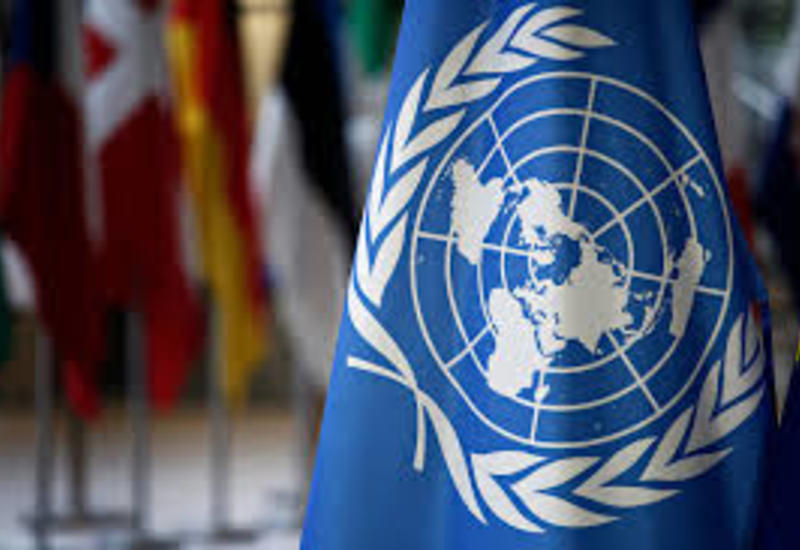
Meanwhile, the UN Security Council, the UN General Assembly, the Council of Europe and a number of other international organizations have not recognized the self-proclaimed "NKR" and have repeatedly expressed support for the territorial integrity of Azerbaijan. This position is enshrined in the corresponding four resolutions of the Security Council. The UN, NATO, the European Union, the Council of Europe, OSCE, OIC and GUAM do not consider the elections to the authority bodies held in Karabakh legitimate and, accordingly, do not consider these authorities themselves legitimate.
Hence the conclusion that an illegitimate entity cannot issue permits for carrying out archaeological work in the territories of a sovereign state, under whose jurisdiction they are located. Consequently, Hamlet Petrosyan excavated illegally. Moreover, his country, Armenia, joined, as noted above, the protocol of the international convention banning excavation in the territory seized during the military conflict, but violated it everywhere.
Now let’s find out if there is a reason for the envy of Azerbaijani archaeologists.
In 1965, Head of the Eneolithic and Bronze Department of the Institute of Archeology and Ethnography, Doctor of Historical Sciences, Professor, Corresponding Member of ANAS, Professor Ideal Narimanov made a sensational find during archaeological excavations in Aghdam district. Near Aghdam, he found a settlement of the Eneolithic era, named after the Chalagantepe area.
Thanks to radiocarbon analysis of charcoal found in Chalagantepe, the age of the settlement is indicated as the first half of the 5th millennium B.C. In the "Museum of Bread" opened in 1983 in the city of Aghdam, the most ancient exhibits were finds from Chalagantepe.
The head of the Karabakh archaeological expedition, senior researcher at the Institute of Archeology and Ethnography, Khagani Almamedov, has continued excavations in this area since 2008. Archaeologists began excavations literally two kilometers from the occupied zone, close to Shahbulag and the notorious "Tigranakert". It turned out that the city discovered by the Armenians is a continuation of the ancient settlement of Ismailbey (formerly called Chalagantepe), found by Narimanov. Two kilometers from the buffer zone under the Ismailbeyli-tepe hill, an expedition of Azerbaijani archaeologists excavated a city that is 7,000 years old.

Ismailbey is a conditional, working name. During the first three years of excavations, Azerbaijani archaeologists surveyed 400 square meters, but this is enough to assert that this city is an event of historic importance in world archeology. A fortress city was found, under the protection of which the advancement of the masters of metallurgy from Mesopotamia to the Caucasus, further to the Crimea and southern Europe began. Ismailbey was created during the so-called Neolithic revolution. It will soon become a Mecca for specialists in the Neolithic Revolution. Khagani Almamedov plans to unearth another 1,000 square meters. Judging by the excellent preservation of the buildings, Ismailbey flourished for at least 3,000 years, and during this period was not destroyed.
In early December, a group of researchers led by the director of the Center for the History of the Caucasus, historian Rizvan Huseynov, with the support of the Ministry of Culture and the Ministry of Defense of Azerbaijan, visited the liberated Aghdam district.
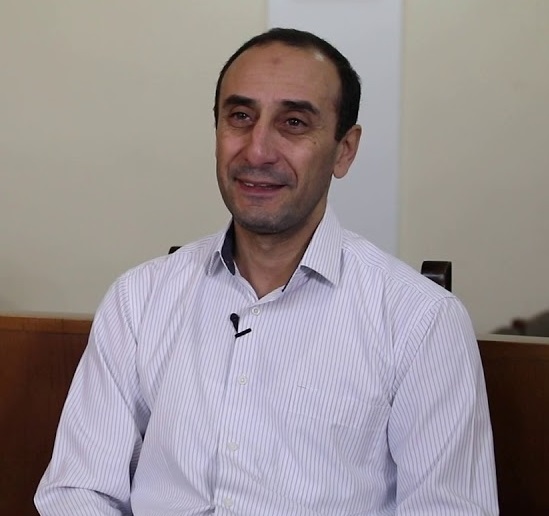
“Having visited the excavation site, we were finally able to figure out what the Armenians called ‘Tigranakert.’ These are public buildings located near the fortress and had a direct relationship to it. Realizing that the finds cannot be attributed to the Armenians in their original form, the falsifiers gave them an appropriate look, trying to pass them off as antique. What do we really see? In fact, we see, probably, the remains of a medieval eastern hamam (bath) and ovdan (underground water storage facility). The structures discovered as a result of excavations have characteristic outlines. But this didn’t stop the Armenian pseudo-scientists, and the remains were named a Christian temple of the 5-6 centuries,” Huseynov said.
Ismailbey settlement is the oldest settlement in the Caucasus. It is 7,000 years old. Samples of bricks were sent to laboratories in Israel and Japan in order to clarify the age of the find, and it was foreign experts who dated the samples to the fifth millennium BC.
Thus, we have proved that Hamlet Petrosyan wasn’t lying only about the non-invitation of Armenian scientists to the conference in Denmark. All the rest is speculation. In addition, it has been proven that Petrosyan’s actions contain corpus delicti.




















